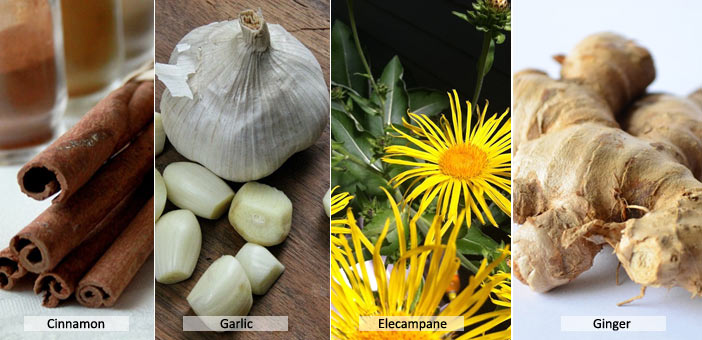If you are searching for a natural way to eliminate toxins from your system or bring down fever, try diaphoretic herbs. These groups of herbs involuntarily induce perspiration, allowing the body to sweat. This property of these herbs makes them an effective natural solution for various ailments, including fever, joint pains, and skin conditions.
These herbs also promote detoxification for weight loss, enhance circulation, cure diarrhea and dysentery, and help flush out toxins and heavy metals from the gall bladder, liver, and urinary bladder. Diaphoretic herbs could also cure edema, urinary tract infections, and genitourinary conditions like herpes.
Read on to learn more about the different diaphoretic herbs and some of the most popular ones in this group!
Different Types of Diaphoretic Herbs
While these herbs technically help stimulate sweating, there are two different groups. While the first one induces sweating by improving your circulation, the latter group eases the surface tension of the pores and nerves to stimulate sweating. The former is known as the warming group and is more potent than the latter, called the cooling. Use them as tea or layer them as blankets to induce sweating.
Examples of warming diaphoretic herbs are angelica, hyssop, sage, thyme, and ginger. Peppermint, lemon balm, Catnip, elderflower, and chamomile fall into the group of cooling diaphoretics!
Top Diaphoretic Herbs to Promote Sweat and Relieve Toxins
Below are some top diaphoretic herbs that can induce sweat and eliminate toxins.

1. Cayenne Pepper (Capsicum annuum)
According to studies, capsaicin present in cayenne pepper helps in generating heat in the body by increasing the circulation. A warm diaphoretic herb induces sweating and helps eliminate excess bile, uric acid, fat, and sebum from the body, making it a powerful antidote for various medical ailments.

2. Cinnamon (Cinnamomum verum)
Cinnamon is an excellent diaphoretic and can be used to improve peripheral circulation. It keeps perspiration under check wherever required, making it an effective cure for diarrhea and dysentery. It also changes the circulation path, thereby regulating the weakness and tension in the periphery.
3. Elderflower (Sambucus nigra)
Elder is a rich source of viburnic acid and flavonoids that render the herb its diaphoretic properties. It could stimulate the sweat glands by eliminating the free radicals and clearing the path for better circulation. This, in turn, helps remove toxins, eventually helping to cure various ailments.
4. Ginger (Zingiber officinale)
Ginger is a warming diaphoretic herb that increases sweating by elevating body temperature. That is why ginger tea helps ease the fever by inducing perspiration. This property of ginger also stimulates the metabolism and detoxification processes, aiding in weight loss. The increase in the circulation rate also helps keep your digestive system clean and functioning effectively.
5. Yarrow (Achillea millefolium)
Yarrow has compounds that help dilate capillaries and increase blood flow to the skin’s surface. By increasing peripheral circulation, yarrow increases sweating. Due to this action, the body cools down during fevers. This action helps in curing fever and also helps in flu-like symptoms.
6. Peppermint (Mentha piperita)
Peppermint is rich in menthol. Menthol is a compound that promotes sweating when taken orally. In addition to increasing the sweat, peppermint also helps cool the body. Due to its cooling properties, it is beneficial in reducing body heat during fever. It also helps in digestion and helps in curing tension headaches.
7. Catnip (Nepeta cataria)
Like other diaphoretic herbs, Catnip also promotes sweating. How it does that is not as well-understood as other herbs. Catnip is used in traditional medicine, Primarily for children, to help reduce fever by increasing sweat. It is also taken during fever due to its calming and soothing properties. In addition, it also helps with digestive issues and nervous tension.
8. Garlic (Allium sativum)
Allicin, a compound present in garlic, helps it to stimulate the functioning of the sweat glands. This could promote sweating, thus ensuring the effective removal of toxins from your body.
9. Angelica (Angelica archangelica)
Known in Chinese as Dong Quai, it is believed to dilate the blood vessels and capillaries beneath your skin. This lowers blood pressure levels, inducing sweating, which in turn promotes the flushing out of toxins.
10. Black Pepper (Piper nigrum)
The diaphoretic properties of black pepper make it an effective cure for fever and cold. It stimulates perspiration on ingestion. Extract of black pepper can be applied topically to ward off migraines and headaches. It also stimulates urination. Thus, it helps eliminate toxins via sweat and urine, promoting weight loss, lowering fever, and easing inflammatory conditions.
Finally, before using diaphoretic herbs as medicines, please consult your physician. This could help avoid various side effects. Since these herbs do not have the same effects as prescription drugs, contact your doctor if you have a fever of over 101 Degrees F or are experiencing difficulty breathing or dizziness. Take care and stay safe!
Other Herbs that Promote Sweat and Relieve Toxins but are not true Diaphoretic Herbs
1. Elecampane
Elecampane contains inulin, a type of phytochemical that could help flush toxins via sweat. This property makes this herb an excellent natural remedy for lowering blood pressure and keeping your heart safe.
2. Ajwain
Carom seeds are yet another natural diaphoretic herbs that do a wonderful job in flushing out the toxins from your system by inducing perspiration. Use it as a tea to melt the excess fat or calm your growing digestive system. You can also use a paste made from Carom seeds for topical application on painful joints to ease the pain.
3. Burdock Root
Burdock root can be used as a tea or applied topically on painful areas to induce sweating and ease the condition. It could also be used with other diaphoretic herbs to promote detoxification, ensuring better fat-burning, improved circulation, and stronger liver.
Diaphoretic herbs FAQs
What are Diaphoretic herbs used for?
Diaphoretic herbs are used for various purposes, including reducing fever, increasing sweating and body heat, and improving blood circulation. They work by stimulating the hypothalamus in the brain, which then causes the release of sweat from your skin. Some common diaphoretics include ginger, garlic, burdock root, tea tree oil, Cayenne Pepper, Cinnamon, and rosemary oil.
Is Peppermint a Diaphoretic?
Yes, peppermint is a diaphoretic. This means that it can cause your body to sweat. Some people use it for its ability to improve concentration and focus, while others use it as a way to cool down or relieve anxiety or stress.
What does it mean to be Diaphoretic?
Diaphoretic describes someone who is particularly susceptible to sweating. This can be common during hot weather and is often used interchangeably with hyperhidrosis (excessive sweating). There are distinctions between the two terms. To be classified as a diaphoretic, sweating must occur even when the person isn’t physically active.
